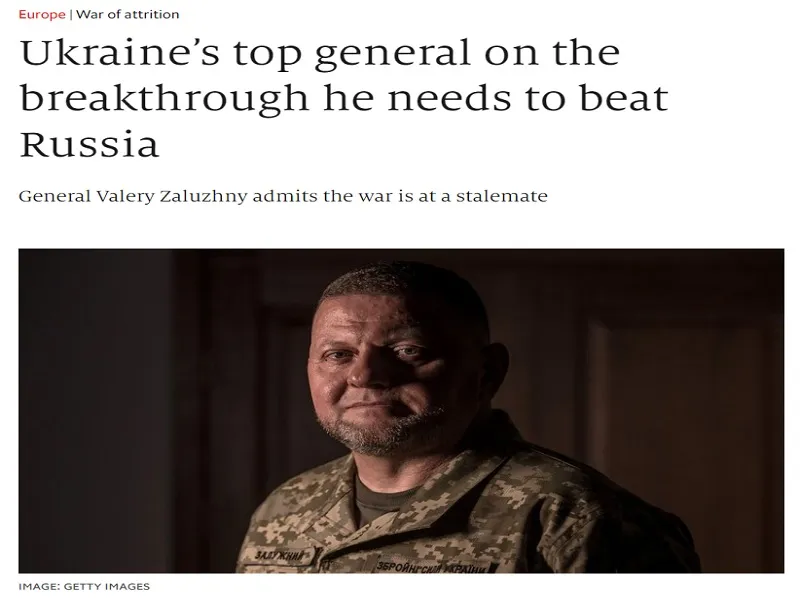It had hitherto been the realm of the Alt-Media Community, which the Mainstream Media discredits as so-called “Russian propaganda”, to speculate about an impending mutiny or military coup prior to Time Magazine’s and The Economist’s articles. After those two’s pieces, however, average Westerners and their policymakers alike can now discuss these scenarios without fear of being smeared.
The congressional dysfunction of the past month coupled with the Israeli-Hamas war that broke out at the same time created the perfect storm from Ukraine’s perspective since it resulted in the abrupt cut-off of aid in parallel with its top patron’s reprioritization of the self-professed Jewish State. “Time Magazine Shared Some ‘Politically Inconvenient’ Truths About Ukraine” in their cover piece on Zelensky citing his unnamed closest aides and senior advisors, which The Economist just extended credence to.
They interviewed Commander-in-Chief Zaluzhny and published a three-part series comprised of their report on this conversation here, his nine-page article on “Modern Positional Warfare And How To Win It” here, and its executive summary that he wrote here. Taken together, they represent this top military official’s last-ditch appeal for American aid, without which his side will either be forced to compromise with Russia via a ceasefire or at least an informal freeze of the conflict or risk a mutiny if it keeps fighting.
The last-mentioned scenario isn’t as far-fetched as Kiev’s most passionate supporters might instinctively claim, however, since both Time Magazine’s and The Economist’s pieces both ominously hint at it. The first informed their readers that some troops have begun refusing orders to advance even when they come from the presidential office, which they regard as suicidal without more arms and men, while the second was strongly implied by Zaluzhny in the first of their three hyperlinked pieces as follows:
“’The biggest risk of an attritional trench war is that it can drag on for years and wear down the Ukrainian state,’ [Zaluzhny] says. In the first world war, mutinies interfered before technology could make a difference. Four empires collapsed and a revolution broke out in Russia.
A collapse in Ukrainian morale and Western support is precisely what Mr Putin is counting on. There is no question in General Zaluzhny’s mind that a long war favours Russia, a country with a population three times and an economy ten times the size of Ukraine’s.”
Reading between the lines, Zelensky – who Time Magazine’s unnamed entourage sources warned “deludes himself” with a belief in Kiev’s victory that has started “verging on the messianic” – might very well gamble that it’s better to risk a mutiny than freeze the conflict. In other words, he’ll keep fighting even if American aid never returns to its previous pace, scale, and scope and remains “only the means to survive” the conflict and not “the means to win the war” as their sources described it.
Zaluzhny was alluding to this worst-case scenario when warning about how a protracted conflict could “wear down the state”, but he preferred to appeal more to some American policymakers’ arrogant belief that they might still be able to defeat Russia in his last-ditch attempt to restore the same level of aid. That’s why he focused more on the specific types of arms that he needs and how he plans to use them in his interview, the article that he wrote, and his executive summary of the aforesaid.
It had hitherto been the realm of the Alt-Media Community, which the Mainstream Media discredits as so-called “Russian propaganda”, to speculate about an impending mutiny or military coup prior to Time Magazine’s and The Economist’s articles. After those two’s pieces, however, average Westerners and their policymakers alike can now discuss these scenarios without fear of being smeared. This represents one of the most significant narrative shifts since the conflict started and should thus be closely followed.



